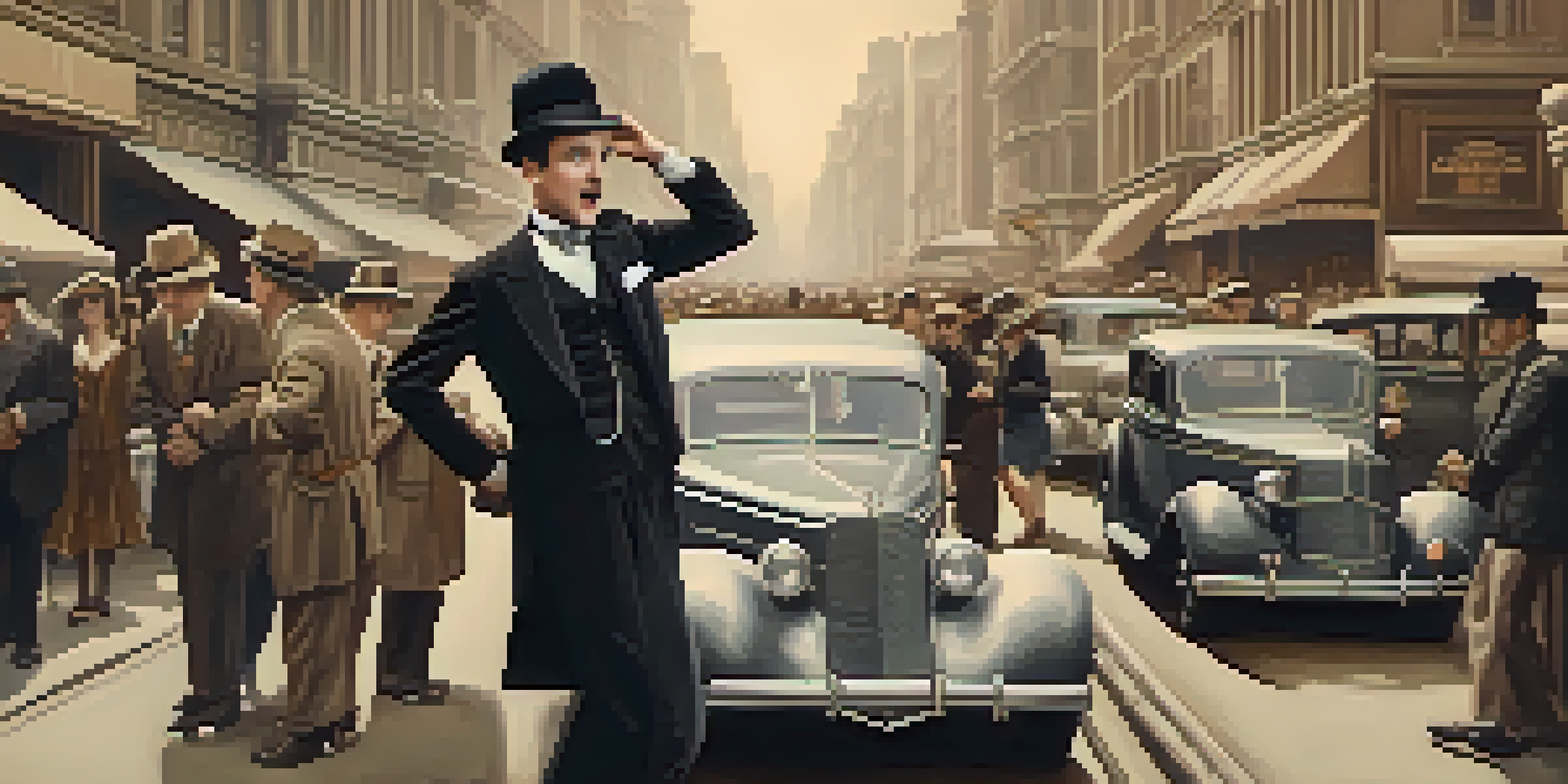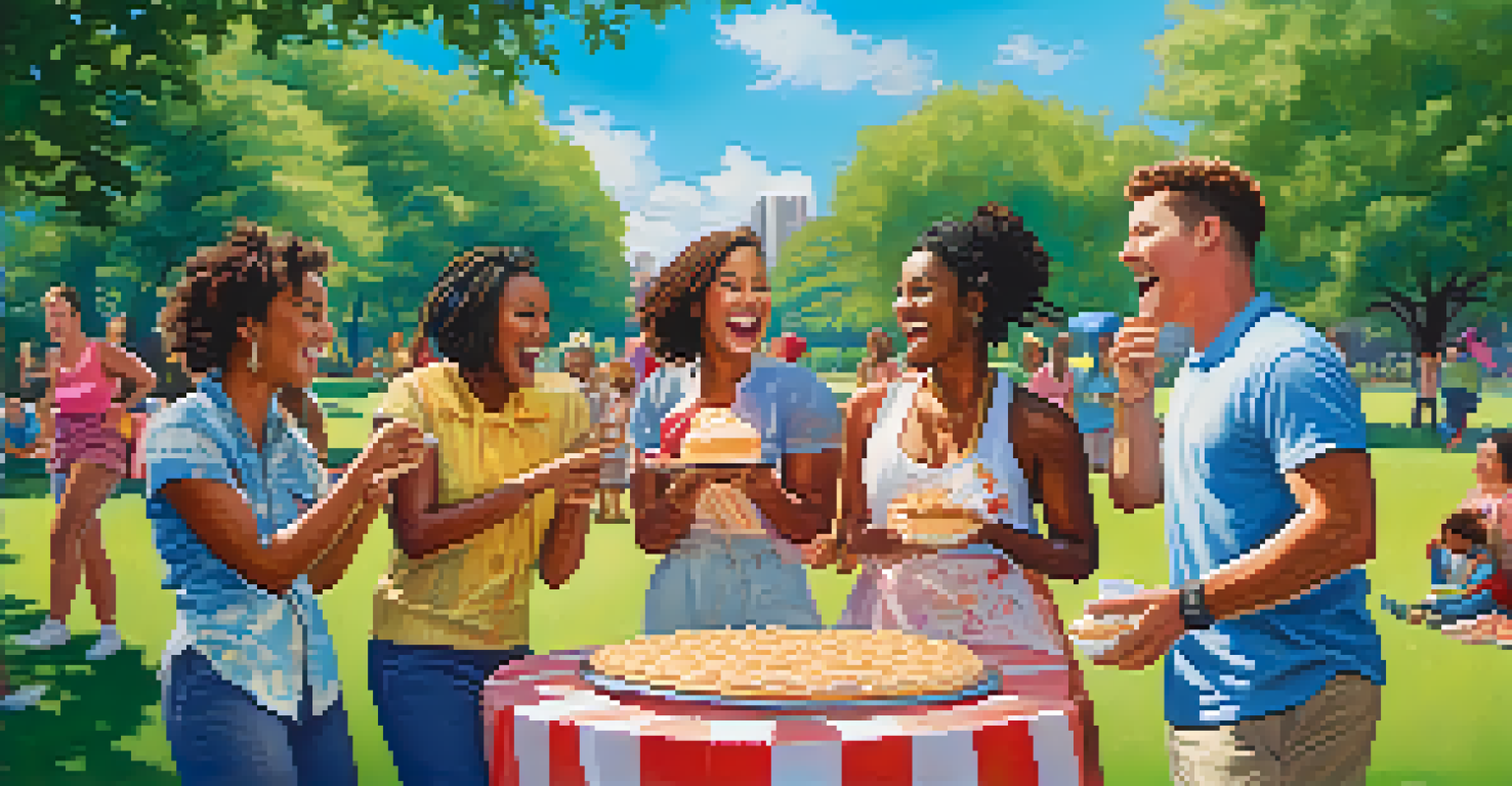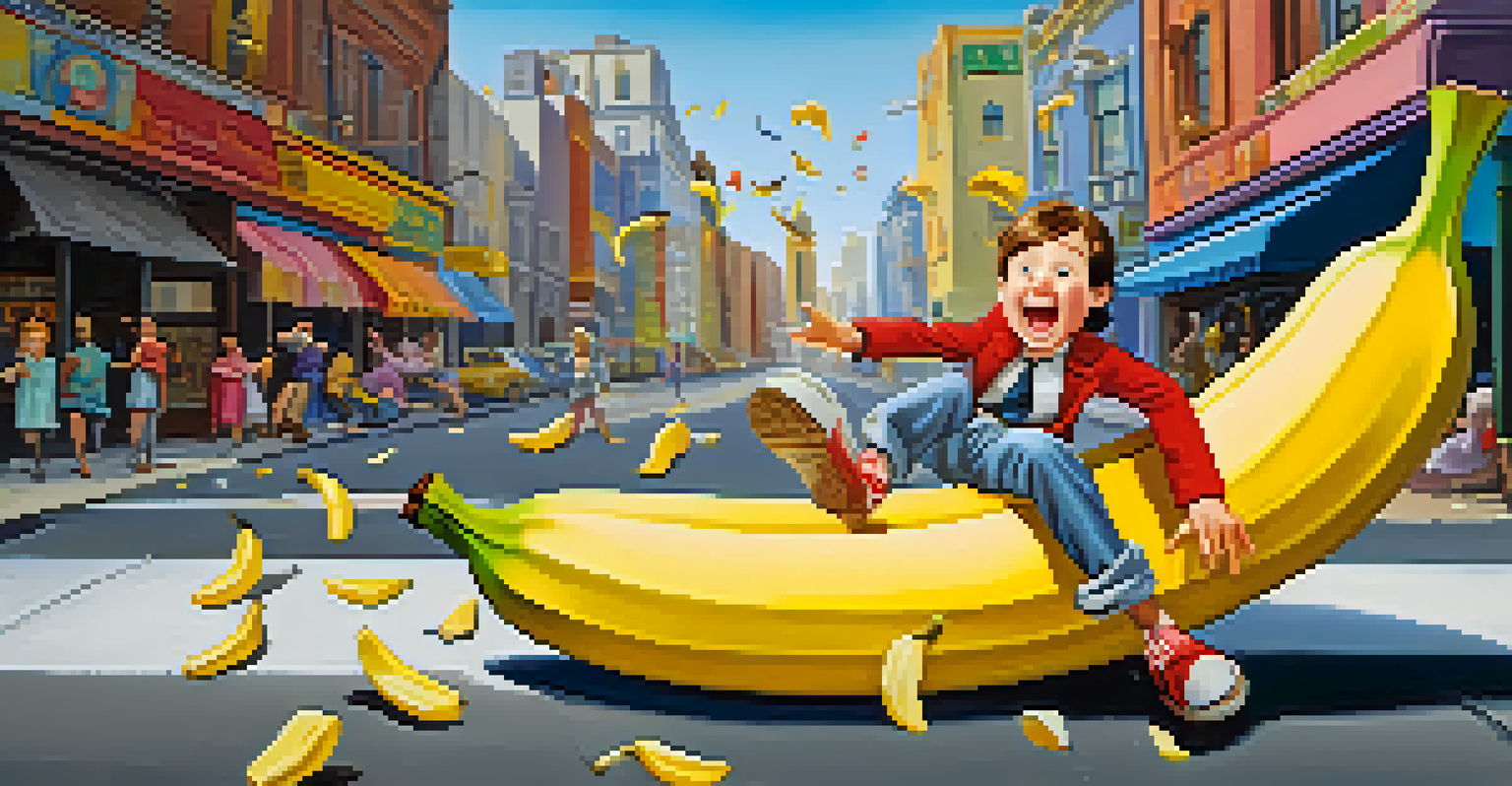Physical Comedy: Evolution and Its Impact on Film Audiences

Understanding Physical Comedy: A Brief Overview
Physical comedy is a genre that relies on visual humor, often emphasizing exaggerated movements and expressions. Think of classic slapstick moments where characters stumble, trip, or engage in absurd antics. This type of comedy transcends language barriers, making it universally relatable and appealing.
Laughter is timeless, imagination has no age, and dreams are forever.
Historically, physical comedy has roots in silent films, where actors like Charlie Chaplin and Buster Keaton used their bodies to convey humor without dialogue. Their impeccable timing and physicality laid the groundwork for future comedians. These early pioneers demonstrated that sometimes, a well-timed pratfall can speak louder than words.
As film evolved, so did physical comedy, integrating with new technologies and storytelling techniques. Today, it remains a vital part of many comedies, illustrating how humor can be both timeless and adaptable as it reaches audiences in diverse ways.
The Silent Film Era: Birthplace of Physical Comedy
The silent film era was a golden age for physical comedy, where visual gags ruled the screen. Audiences flocked to theaters to see performers like Chaplin and Keaton, whose comedic styles relied heavily on physicality. Their ability to evoke laughter without uttering a single word was revolutionary.

These comedians used everyday situations to create humorous scenarios, often highlighting the absurdity of life. For instance, Chaplin's 'The Tramp' character was a lovable misfit navigating a world filled with obstacles, showcasing resilience through humor. This relatability drew audiences in and made them laugh.
Physical Comedy's Timeless Appeal
Physical comedy transcends language and cultural barriers, making it a universally relatable form of humor.
Moreover, the limitations of silent storytelling pushed these actors to develop unique styles that emphasized movement and expression. By mastering the art of physical comedy, they set a standard that would influence generations of filmmakers and comedians.
The Transition to Talkies and Its Challenges
With the advent of sound in films, the landscape of comedy began to shift. Some feared that physical comedy would fade as dialogue took center stage in storytelling. However, many comedians adapted their acts, blending verbal wit with their established physical routines to keep audiences laughing.
The most wasted of days is one without laughter.
The transition wasn't without its hurdles. Some talented silent film stars struggled to find their footing in the talkie era, as their comedic strength lay in their physicality rather than verbal delivery. Yet, others, like the Marx Brothers, thrived by combining sharp dialogue with their zany antics, proving that both elements could coexist.
This era demonstrated that while physical comedy had to evolve, it was far from obsolete. The ability to make audiences laugh through movement remained a powerful tool, and filmmakers began to explore how to balance both verbal and physical humor in their works.
Influence of Physical Comedy on Modern Filmmaking
Modern films continue to draw inspiration from the physical comedy styles of the past, often blending them with contemporary storytelling techniques. Movies like 'Dumb and Dumber' and 'The Mask' showcase how physical gags can amplify humor while still engaging audiences in a new way. This fusion keeps the spirit of classic comedy alive.
Filmmakers today understand the importance of visual humor as a means of connecting with audiences. The use of slapstick elements, exaggerated movements, and physical sight gags can create memorable moments that resonate long after the credits roll. This understanding has led to the revival of physical comedy in various genres.
Evolution with Technology
As technology advances, physical comedy continues to adapt, finding new expressions in platforms like social media and virtual reality.
Moreover, the rise of digital platforms has allowed for experimentation with physical comedy in ways that resonate with younger audiences. Social media trends often emphasize short, funny clips that rely on physicality, illustrating its enduring appeal and adaptability in the digital age.
Cultural Impact: How Physical Comedy Connects Audiences
Physical comedy has a unique ability to bridge cultural divides, enabling laughter across language barriers. The exaggerated expressions and slapstick moments resonate with viewers from diverse backgrounds, making it a powerful tool for filmmakers. This universality helps foster a sense of connection among audiences.
Consider the global success of animated films like 'The Incredibles' or 'Minions,' which rely heavily on physical humor. These films have found their way into homes around the world, proving that when it comes to laughter, sometimes actions truly speak louder than words. This aspect of physical comedy contributes to its widespread appeal.
Additionally, physical comedy often reflects societal norms and challenges them in humorous ways. By poking fun at everyday situations, it allows audiences to laugh at shared experiences, creating a sense of camaraderie and understanding. This ability to connect people through humor is a testament to the genre's impact.
The Role of Timing in Physical Comedy
Timing is everything in physical comedy; it can make or break a joke. The precision with which a comedian executes a gag can transform a simple act into something uproariously funny. This aspect is often why audiences are captivated by the craft of physical comedians, as they master timing to elicit laughter.
For instance, think of a classic pie-in-the-face gag. The anticipation builds as the character prepares to throw the pie, and the timing of the splash can evoke uproarious laughter. This careful orchestration of movement and timing is what separates the greats from the rest, showcasing their skill and expertise.
Importance of Timing in Comedy
Mastering timing is crucial in physical comedy, as it significantly enhances the effectiveness of comedic gags.
In modern filmmaking, this principle remains crucial. Directors often collaborate closely with actors to ensure that the timing of physical comedy aligns perfectly with the rhythm of the scene. This attention to detail enhances the overall comedic effect, making it a vital element in the success of a film.
Future Trends in Physical Comedy and Audience Engagement
As we look ahead, physical comedy is poised to evolve further with technological advancements. From virtual reality experiences to interactive films, new platforms offer exciting opportunities for comedians to experiment with physical humor. These innovations can create immersive experiences that draw audiences in like never before.
Moreover, the rise of influencer culture has led to a resurgence of short-form physical comedy on platforms like TikTok and Instagram. Comedians and creators are leveraging their skills to craft engaging, bite-sized content that resonates with younger viewers, keeping the spirit of physical comedy alive in contemporary culture.

Ultimately, the future of physical comedy will likely continue to embrace its roots while adapting to modern storytelling techniques and audience preferences. By remaining versatile and innovative, this genre can keep captivating audiences for years to come.